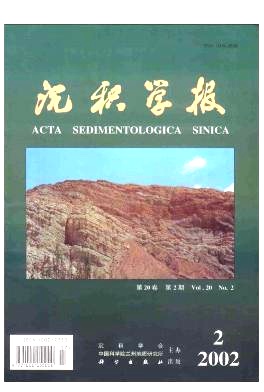HTML
| [1] | 1. Gaetani M & Garzanti E.Multicyclic history of the northern India continental margin (northwestern Himalaya) [J]. AAPG Bull.,1991, 75(9): 1 427~1 446 2. 李祥辉,王成善。特提斯喜马拉雅显生宙的超层序[J].特提斯地质。1997,(21): 8~30 [Li Xianghui,Wang Chengshan.Supersequences of the Phanerozoic in the Tethys Himalayas [J].Tethys Geology,1997,(21):8~30] 3. Wang C S ,Li X H.Supersequences of the Phanerozoic in the Tethys Himalayas [A].In: Liu B J and Li S T,eds.,Basin analysis,global sedimentary geology and sedimentology [C].Proceedings of the 30th IGC,1997,8: 275~293 4. 西藏区调队。西藏地矿局。中华人民共和国区域地质调查报告1:1000000,拉萨幅H-46 [M].北京: 地质出版社,1979[Tibet Survey of Tibet Bureau of Geology and Mineral Resources.Caption of Geology Map:1∶1000000,Lhasa H-46,P.R.China [M].Beijing:Geological Publishing House,1979] 5. 西藏地质局综合普查大队。西藏申扎地区古生代地层的新发现[J].地质论评,1980,26(2): 162,151[Reconnaissance Survey Team of Tibet Geology Bureau.New discovery of Paleozoic strata in Shenzha area,Tibet[J].Geological Review,1980,26(2):162,151] 6. 喻洪津。藏北申扎地区中-晚志留世牙形剌生物地层[A].青藏高原地质文集(16)[C].北京: 地质出版社,1985.15~34[Yu Hongjin.Middle-Late conodont biostratigraphy in Shenzha area,northern Tibet[A].Contributions to Qinghai-Xizang Plateau Geology (16)[C].Beijing:Geological Publishing House,1985.15~34] 7. 西藏区调队。西藏地矿局。中华人民共和国区域地质调查报告1:1000000,日喀则幅H-45、亚东幅G-45[M].北京: 地质出版社,1983[Tibet Survey of Tibet Bureau of Geology and Mineral Resources.Caption of Geology Map:1∶1000000,Xigaze H-46,Yadong G-45,P.R.China[M].Beijing:Geological Phblishing House,1983] 8. 陈清华,王建平,王绍兰,吴孔友。西藏措勤盆地上二叠统的发现及其地质意义[J].科学通报,1998,43(19):2 111~2 114[Chen Qinghua,Wang Jianping,Wang Shaolan,Wu Kongyou.The discovery of Upper Permianin the Cuoqen basin of Tibet and its significances[J].Chinese Science Bulletin,1998,43(19):2 111~2 114] 9. Marcoux J,Girardeau J,Fourcade E,et al.Geology and biostratigraphy of the Jurassic and Lower Cretaceous series to the north of the Lhasa Block (Tibet,China)[J].Geodinamica Acta (Paris),1987,1(4/5): 313~326 10. 王冠民。西藏措勤盆地下白垩统多巴组沉积环境分析[J].沉积学报,2000,18(3): 349~354[Wang Guanmin.Sedimentary environment analysis of the Duoba Formation of Lower Cretaceous in the Cuoqen basin of Tibet[J].Acta Sedimentaologica Sinica,2000,18(3):349~354] 11. Vail P R,Mitchum R M,Todd R G,et al.Seismic stratigraphy and global changes of sea level [A].In: Payton C E,ed.Seismic Stratigraphy-Applications to Hydrocarbon Exploration [C].AAPG Mem.,1977,26: 49~212 12. 刘训,傅德荣,姚培毅等。青藏高原不同地体的地层、生物区系及沉积构造演化史[M].北京: 地质出版社,1992.169[Liu Xun,Fu Derong,Yao Peiyi,et al.Tectonic evolution of terranes on strata,biota and sediment in the Qinghai-Xizang Plateau [M].Beijing:Geological Phblishing House,1992.169] 13. 陈挺恩。西藏南部奥陶纪头足类动物群特征及奥陶系的再划分[J].古生物学报,1984,23(4): 452~471[Chen Ting-en.Ordovician cephalopod fauna and Ordovician reclassification in southern Tiber[J].Acta Palaeotologica Sinica,1984,23(4):452~471] 14. 李祥辉,吴铬,王成善等。西藏措勤盆地古生界-中生界岩相古地理演化[J].成都理工学院学报,2001,28(3): 1~10[Li Xianghui,Wu Ge,Wang Chengshan,et al.Paleozoic to Mesozoic changes of lithofacies and paleogeography of the Cuoqen Basin,central Tibet[J].Journal of Chengdu University of Technology,28(4):331~339] 15. Sengr A M C.The Cimmeride orogenic system and the tectonics of Eurasia [M].Spec.Pap.GSA,1984,195: 7~82 Sengr A M C.The story of Tethys: How many views did Okeanos have? [J] Episode,1985,8: 3~12 16. 徐仁。藏南舌羊齿植物群的发现和其在地质学和古地理学上的意义[J].地质科学,1976,10(4): 323~332[Xu Ren.The Discovery of Glossoperis flora in southern Tibet and its significances on geology and paleogeography [J].Scientia Geologica Sinica,1976,10(4):323~332] 17. 林宝玉。西藏中南部雅鲁藏布江两侧早二叠世地层和珊瑚动物学[A].中法喜马拉雅考察报告(1980)[C].北京: 地质出版社,1984.63~84[Lin Baoyu,Early Permian and coral invertebrate along both northern and southern sides of Yarlung Zangbo[A].In:Report to the Himalaya Geological Investigation of Sino-France united team (1980)[C].Beijing:Geological Publishing House,1984.63~84] 18. 杨式溥,范影年。西藏石炭纪腕足类动物群及其古动物地理区系特征[A].青藏高原地质文集(11)[C],1983.265~289[Yang Shipu,Fan Yingnian.Carboniferous brachiopod fauna and their biota feature in Tibet[A].Contributions to Qinghai-Xizang Plateau Geology(11)[C].Beijing:Geological Publishing House,1983.265~289] 19. 范影年。中国西藏石炭-二叠纪皱纹珊瑚的地理区系[A].青藏高原地质文集(16)[C],1985.87~106[Fan Yingnian.Rogusa biota of Carboniferous and Permian in Tibet of China[A].Contributions to Qinghai-Xizang Plateau Geology (16)[C].1985.87~106] 20. 范影年。西藏石炭系[M].重庆: 重庆出版社,1988.128[Fan Yingnian.Carboniferous in Tibet[M].Chongqing:Chongqing Press,1988.128] 21. 王连城,郭师曾。西藏的含砾板岩[A].西藏南部的沉积岩[C].北京: 科学出版社,1981.73~86[Wang Liancheng,Guo Shizeng.Diamictites in Tibet[A].In:Sedimentary Rocks in Southern Tibet[C].Beijing:Science Press,1981.73~86] 22. 韩同林,王乃文。西藏北部石炭纪冰川-海洋相地层的发现[J].中国地质科学院院报,1983,7: 41~56[Han Tonglin and Wang Naiwen.Discovery of Carboniferous glacial-type marine strata [J].Journal of Chinese Geology Academy,1983,7:41~56] 23. 陈炳蔚。西藏八宿来姑中、上石炭统似冰碛岩的发现及其意义[J].地质论评,1982,28(2): 148~151[Chen Bingwei.Discovery of middle-Upper Carboniferous para-tillite at Laigu of Basu,Tibet and its significances[J].Geological Review,1982,28(2):148~151] 24. 尹集祥,闻传芬。西藏石炭系和下二叠统杂砾岩及其地层特征和成因讨论[A].地质研究所集刊[C],1988,3: 26~54[Yin Jixiang,Wen Chuanfen.Carboniferous and Lower Permian diamictites within stratigraphical controls and causes discussion in Tibet [A].In:Treatise of Geology Institute of Chinese Academy[C].1988,3:26~54] 25. Yin J X.Characteristics of diamictites from the Late Carbonaiferous Pondo Group in Lhasa terrane,Xizang (Tibet) of China and discussion on the origin [A].In: Onzieme Congress Inter.De Stratigr.et de Geologie du Carbonifere [C].Beijing,Compte Rendu,Tom.4,Nanjing University Press,1989.96~105 26. Leeder M R,Smith A B,Yin J X.Sedimentology,palaeoecology and palaeoenvironmental evolution of the 1985 Lhasa to Gulmod geotraverse [A].In Geological Evolution of Tibet [C].Phil.Trans.R.Soc.Lond.,1988,A327; 107~144 27. 尹集祥。青藏高原及邻区冈瓦纳相地层地质学[M].北京: 地质出版社,1997.206[Yin Jixiang.Gondwanaland stratigraphic geology in Tibet and surrounding areas[M].Beijing:Geological Publishing House,1997.206] |






 DownLoad:
DownLoad: